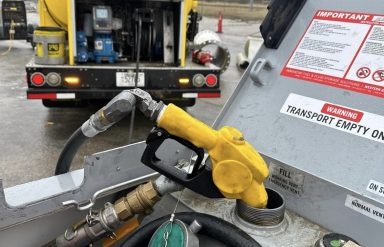Imagine running a chemical or pharmaceutical company where every process not only meets regulatory demands but also champions environmental stewardship. Sounds like a tall order, right? Yet, that’s exactly what ISO 14001 certification offers—a structured path to balance profitability with planet-friendly practices. For industries like yours, where hazardous materials and complex supply chains are par for the course, this standard isn’t just a badge of honor; it’s a game-changer. Let’s walk through what ISO 14001 means, why it matters for chemical and pharma companies, and how you can make it work for you.
Why ISO 14001? The Big Picture
You know how the chemical and pharma world gets a bad rap for pollution or waste? It’s not entirely fair, but public perception sticks like glue. ISO 14001, an internationally recognized environmental management system (EMS) standard, helps you flip that narrative. It’s not about slapping a green label on your operations; it’s about building a framework to identify, manage, and reduce your environmental footprint. Think of it as a GPS for navigating the messy terrain of compliance, sustainability, and stakeholder expectations.
Here’s the thing: chemical and pharma companies face unique challenges. You’re dealing with volatile compounds, energy-intensive processes, and waste streams that could make an environmentalist’s head spin. ISO 14001 gives you tools to tackle these head-on. It’s not just about meeting EPA or EU regulations—it’s about staying ahead of the curve, cutting costs, and showing your customers you mean business when it comes to sustainability.
Regulatory Compliance: Avoid fines and stay aligned with local and global environmental laws.
Cost Savings: Reduce energy use, waste, and resource consumption.
Reputation Boost: Win over eco-conscious clients and investors.
Risk Management: Minimize spills, leaks, or other environmental incidents.
The Nuts and Bolts of ISO 14001
So, what’s ISO 14001 all about? At its core, it’s a set of guidelines for creating an EMS that’s tailored to your company’s needs. It’s not a one-size-fits-all checklist; it’s more like a recipe you adapt to your kitchen. The standard follows a Plan-Do-Check-Act (PDCA) cycle, which keeps your environmental efforts dynamic and adaptable. Let’s break it down:
Plan: Identify environmental impacts, set goals, and map out policies. For a pharma company, this might mean auditing water usage in drug manufacturing or assessing chemical storage risks.
Do: Put your plan into action. Train employees, update processes, and maybe even invest in greener tech like low-emission reactors.
Check: Monitor your progress. Are you hitting your waste reduction targets? Are emissions within limits? Tools like Enablon or Sphere can help track this.
Act: Adjust based on what you find. Maybe you need tighter controls on solvent disposal or better supplier vetting for raw materials.
This cycle isn’t a one-and-done deal. It’s a loop that keeps your EMS evolving, much like how you tweak a formulation to get the perfect drug compound. And here’s a little secret: the process feels daunting at first, but once it’s rolling, it’s like riding a bike—steady and intuitive.
Why Chemical and Pharma Companies Can’t Ignore This
Let’s get real for a second. Your industry isn’t exactly known for being light on the environment. Between solvent emissions, wastewater, and energy-hungry production lines, the chemical and pharma sectors are under a microscope. Regulations like REACH in Europe or TSCA in the U.S. are only getting stricter. And then there’s the public—consumers and advocacy groups who aren’t shy about calling out polluters. ISO 14001 isn’t just a shield against these pressures; it’s a way to turn them into opportunities.
Take a company like Pfizer or BASF. They’ve leaned into ISO 14001 not because it’s trendy but because it makes sense. Pfizer, for instance, has slashed water usage and greenhouse gas emissions across its plants, partly thanks to its EMS. BASF, a chemical giant, uses ISO 14001 to streamline waste management, saving millions annually. These aren’t small wins—they’re proof that environmental responsibility and profitability can go hand in hand.
But it’s not just about the big players. Smaller firms, like a specialty chemical manufacturer or a generic drug maker, can benefit too. You might not have Pfizer’s budget, but ISO 14001 scales to your size. It’s flexible enough to fit a 50-person operation or a sprawling multinational.
Getting Started: Where to Begin?
Okay, so you’re sold on the idea. But where do you start? Honestly, the first step is the hardest because it requires a mindset shift. You’re not just tweaking a process; you’re committing to a culture of continuous improvement. Here’s a roadmap to ease you in:
1: Get Leadership On Board
You need buy-in from the C-suite. Without it, your EMS will fizzle out faster than a bad batch of reagents. Show your execs the numbers—studies from the International Organization for Standardization show that ISO 14001 Certification can cut operational costs by up to 10% through efficiency gains. Plus, it’s a selling point for investors who are increasingly obsessed with ESG (Environmental, Social, Governance) metrics.
2: Conduct an Environmental Review
Take stock of your environmental impact. This means looking at everything—energy use, water consumption, waste streams, even the packaging for your products. For a chemical company, you might zero in on volatile organic compound (VOC) emissions. For pharma, it could be the disposal of expired drugs. Software like Intelex can make this audit less painful.
3: Set Clear, Achievable Goals
Don’t try to boil the ocean. Start with specific, measurable targets. Maybe it’s reducing solvent waste by 15% in a year or cutting energy use in your labs by 10%. These goals should align with your company’s broader strategy—think of them as ingredients in your corporate stew.
4: Train Your Team
Your employees are the heart of this. From lab techs to plant managers, everyone needs to understand their role in the EMS. Training doesn’t have to be dull—use real-world examples, like how a spill could harm local waterways, to make it hit home. Platforms like SAP Litmos can gamify this process, keeping your team engaged.
Challenges You Might Face (And How to Tackle Them)
Let’s not sugarcoat it—getting ISO 14001 certification isn’t a walk in the park. Chemical and pharma companies face some unique hurdles:
Complex Processes: Your production lines are intricate, with thousands of variables. Mapping their environmental impact can feel like solving a Rubik’s Cube blindfolded. Solution? Break it down into smaller chunks—focus on one process, like distillation or tablet coating, at a time.
Regulatory Overlap: You’re already juggling OSHA, FDA, and EPA rules. Adding ISO 14001 might seem like piling on. But here’s the silver lining: the standard often aligns with existing compliance frameworks, so you’re not starting from scratch.
Cost Concerns: Certification isn’t cheap—expect to spend $10,000 to $50,000 depending on your company’s size, per industry estimates. But think of it as an investment. Energy savings, waste reduction, and improved marketability often recoup those costs within a couple of years.
And here’s a quick tangent: don’t underestimate the power of employee morale. When your team sees the company taking environmental responsibility seriously, it boosts engagement. It’s like giving them a reason to feel proud of their work, beyond just the paycheck.
Wrapping It Up: Your Next Steps
So, where do you go from here? ISO 14001 isn’t a quick fix, but it’s a journey worth taking. Start small—maybe a pilot project at one facility. Engage your team, lean on software to streamline data, and don’t be afraid to ask for help from consultants or certification bodies. The chemical and pharma world is at a crossroads, and this standard is your chance to lead the charge toward a greener, more profitable future.
You know what’s wild? The planet’s been here for billions of years, and yet it’s our generation that gets to decide its fate. ISO 14001 isn’t just about compliance—it’s about leaving a legacy. So, what’s stopping you? Grab this opportunity, and let’s make your company a beacon of sustainability.
ISO 14001 Certification: Your Roadmap to Greener Chemical and Pharma Operations
Posted by
–
Follow Us
Recent Posts
Tags
#technology airline airlines american airlines customer service anti-virus asacc sdca business Chat Coinbase coinbase support number Crypto.com support number Email Expedia expedia customer service faq fashion helping Jetblue norton or Chat Options: Step by Step Guide qb quickbooks QuickBooks Payroll Support Number Service Support travel travels UnitedAirlines United Airlines werty





Leave a Reply
You must be logged in to post a comment.